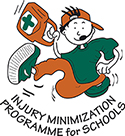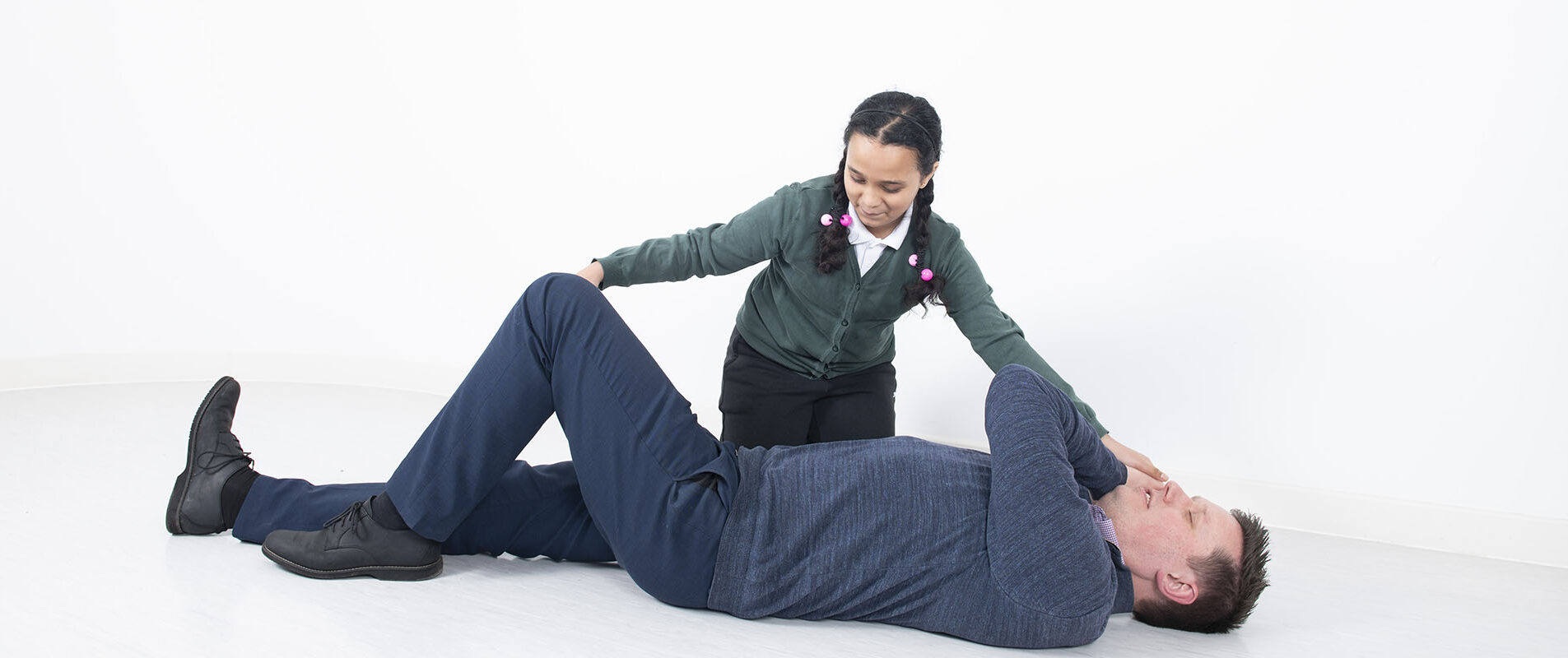Basic Life Support (BLS)
We teach basic life support (or BLS) to year 6 primary school children as part of the I.M.P.S. course. Specially trained members of the team deliver a practical hands on session either in a hospital setting or within the school.
What is BLS?
BLS is an essential skill for everyone to learn as it may save a life within the chain of survival. I.M.P.S. adheres to the Resuscitation Council UK Guidelines for adult basic life support.
BLS refers to the process of maintaining an open airway, and supporting breathing and circulation without the use of equipment other than a protective device. It includes:
What is Cardio-pulmonary resuscitation? (CPR)
Cardio-pulmonary resuscitation (CPR) is part of the ‘chain of survival‘ for people who have collapsed and have stopped breathing.
It consists of:
- cardiac compressions
- use of an Automated External Defibrillator (AED)
The Resuscitation Council (UK) recommends that to improve survival from cardiac arrest:
“All school children are taught CPR and how to use an AED”
What we teach the children about BLS.
We teach the children how to resuscitate an unconscious non-breathing adult without assistance. (one man rescuer)
The teaching session is delivered with each child having access to a resuscitation manikin and simulator defibrillator to practise with.
The children are taught how to keep themselves safe by checking for dangers, how to assess a collapsed person and how to shout for help. They learn how to open an airway, check for signs of normal breathing and how to telephone 999 for emergency assistance. They are taught how to administer cardiac compressions using a manikin and learn about using an automated external defibrillator (AED)
Dangers, Response, Shout, Airway, Breathing, CPR
This is called the primary survey and we give it the acronym DRS ABC to make it easy to remember.
Why do we teach adult BLS?
- This is the ‘worst case’ scenario that could be encountered.
- Statistically, the most likely scenario any bystander will encounter is of an adult suffering a Sudden Cardiac Arrest (SCA.)
- If you learn adult BLS then you can transfer the skills to the resuscitation of children. The resuscitation council says “Rescuers who have been taught adult BLS, and have no specific knowledge of paediatric resuscitation, should use the adult sequence”
Recovery Position.
How to put someone into the recovery position is another essential life skill for everyone and it’s not difficult to learn.
What is the recovery position?
The recovery position is simply lying the unconscious, breathing person on their side with their head slightly tipped back to prevent the tongue and/or vomit from blocking the airway (tube from the nose and mouth down to the lungs)
Watch a video clip of how to do the recovery position or download a recovery position worksheet
What we teach the children about the recovery position.
All of the I.M.P.S. children are taught how to place a person in the recovery position and have the opportunity to practise on their peers during the practical BLS session. We always encourage teachers to incorporate this into PE lessons at school and for the children to practise on their families at home.
“When I got home I tried out the recovery position on my sister and my dad”
Why do we teach the recovery position?
When a person is unconscious and still breathing (common causes are alcohol and drugs, illness, head injury etc) it is vital that the integrity of the airway is protected to prevent the tongue and/or vomit from blocking the airway. This would cause the person to stop breathing. Many young people may need to use this skill on one of their friends or family in the future and this simple knowledge may prevent unnecessary deaths.
Choking
Choking is a common cause of death and can occur at any age. It is important that everyone knows what to do in the event of a choking incident.
What is choking?
Choking occurs if the airway (the tube from the nose and mouth to the lungs carrying air) becomes blocked with a foreign body e.g. food, a small object or vomit. Watch a British Red Cross film about how to deal with choking
What we teach the children about choking.
We teach the children how to deliver back slaps, the abdominal thrust and how to get emergency assistance in the event of a person choking.
Why do we teach the children what to do in the event of choking?
We teach every child how to recognise choking and how to administer first aid treatment via our I.M.P.S. interactive DVD. A number of our I.M.P.S. children (and teachers) have intervened in the event of someone choking and have saved lives or prevented serious permanent injury.


